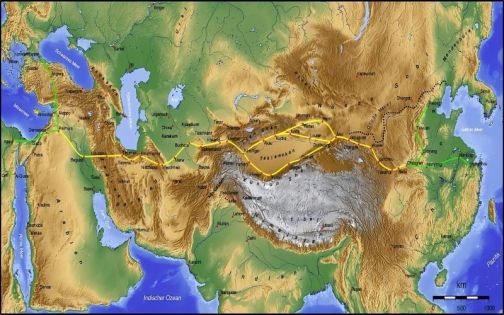Exploring China’s Silk Road: Culture, History, and Must-See Routes
When most people hear “Silk Road,” they imagine a network of ancient trade routes connecting East and West, carrying silk, spices, and ideas across continents. But the Silk Road in China is more than a path of commerce—it’s a journey through history, culture, and breathtaking landscapes. If you’ve ever wondered what it’s like to explore China’s Silk Road, this guide will answer your questions and inspire your next adventure.
What is the Chinese Silk Road?
The Silk Road was not a single road but a vast network of routes linking China with Central Asia, the Middle East, and even Europe. Its origins date back over 2,000 years during the Han Dynasty, when merchants and explorers began transporting silk, tea, ceramics, and other goods. Over centuries, it became a conduit not just for trade but for cultural exchange, spreading religions, art, and technology along its paths.
In modern terms, the Silk Road encompasses several provinces in Northwest China, including Gansu, Xinjiang, Qinghai, and parts of Sichuan and Shaanxi. From the desert cities of Dunhuang to the Tibetan-influenced landscapes of Gannan, the route offers a fascinating blend of natural beauty and historical significance.

The silk road
Cultural Highlights Along the Silk Road
One of the most captivating aspects of the Silk Road is its cultural diversity. Travelers will encounter Buddhist monasteries, Islamic architecture, Tibetan temples, and ancient fortresses along the way.
-
Buddhist Heritage: Dunhuang, in Gansu Province, is home to the Mogao Caves, a UNESCO World Heritage site featuring over 700 cave temples with stunning murals and statues. This ancient site reflects the deep Buddhist influence along the Silk Road. You can explore the caves on a Dunhuang 5-Day Tour to immerse yourself in history.
-
Tibetan Influence: Further southwest, the Gannan Tibetan Autonomous Prefecture in Gansu offers rich Tibetan culture, monasteries like Labrang, and scenic grasslands. A journey through this region gives travelers a taste of Tibetan traditions without going deep into Tibet itself. Check out our Gannan & Sichuan Silk Road Loop for an unforgettable cultural experience.
-
Ethnic Diversity: The Silk Road is also a living mosaic of ethnic minorities, including Mongols, Hui Muslims, and Tibetans. Visitors can experience local festivals, taste regional cuisine, and witness traditional crafts like silk weaving and paper-cutting.

Mogao Grottoes
Must-See Scenic Routes
China’s Silk Road is renowned not just for its history but for its breathtaking landscapes. Here are some highlights:
-
The Gobi Desert and Dunhuang: The expansive Gobi Desert offers iconic desert scenery with sand dunes, oasis towns, and star-filled night skies. Crescent Lake and Mingsha Sand Dunes near Dunhuang are unforgettable sights.
-
The Hexi Corridor: This ancient route through Gansu connects several key Silk Road cities. Along it, travelers can find historical forts, temples, and the colorful Zhangye Danxia Landform, often referred to as the “Rainbow Mountains.”
-
Tibetan Grasslands in Gannan: Rolling pastures, Tibetan monasteries, and local nomadic life create an entirely different atmosphere. It’s a peaceful contrast to the desert landscapes and offers unique cultural immersion.
-
Sichuan Highlands: If your route extends into Sichuan, the Silk Road intersects with the mountains and valleys of Western China, offering picturesque scenery and opportunities for adventure tourism.

The Gobi Desert
Answering Travelers’ Questions About the Silk Road
How long does it take to explore the Silk Road in China?
It depends on your route and interests. A focused journey like a 5-day Dunhuang tour covers major highlights in Gansu, while a longer Silk Road loop through Gansu and Sichuan can take 7–10 days to experience cultural and natural landmarks fully.
Is it safe for foreign travelers?
Absolutely. Cities along the Silk Road are accustomed to tourism. Modern transportation, hotels, and guided tours make it easy to explore safely, though remote areas may require careful planning.
What is the best time to visit?
Spring (April–June) and autumn (September–October) are ideal. The weather is moderate, and you’ll avoid extreme heat in deserts or heavy snow in high-altitude areas.
Can I combine cultural experiences with scenic exploration?
Yes. Tours are often designed to balance historical visits with natural landscapes. For example, on a Gannan & Sichuan Silk Road Loop, travelers visit Tibetan monasteries, explore grasslands, and enjoy mountain scenery, all in one trip.










